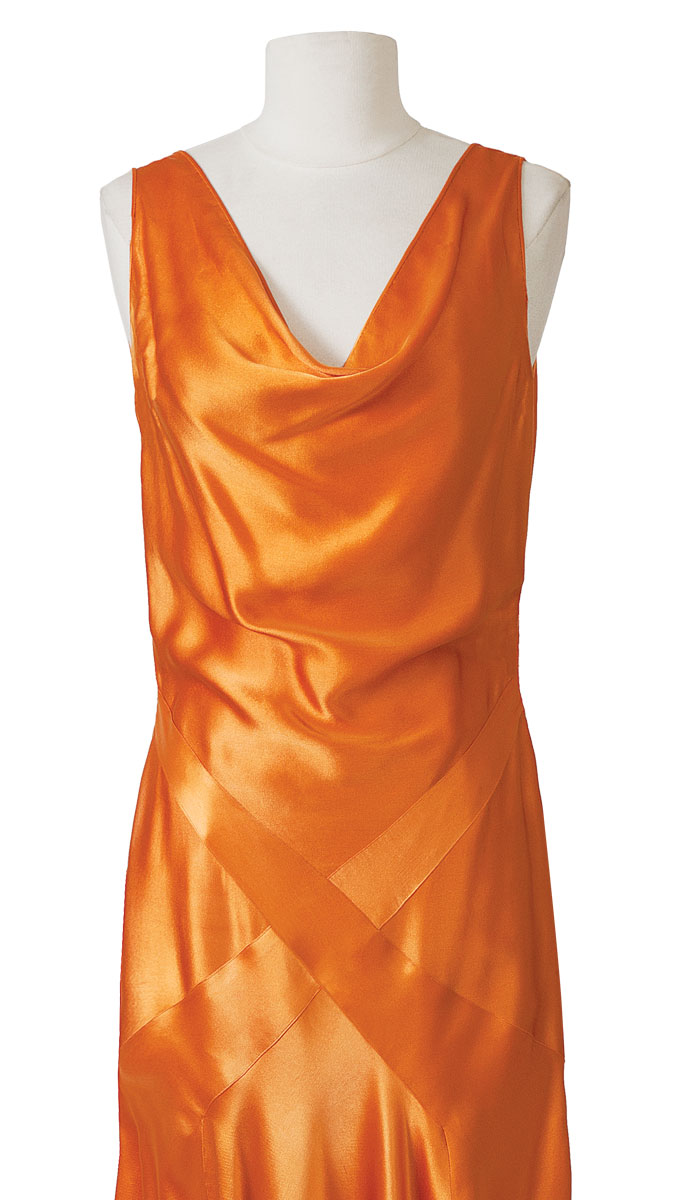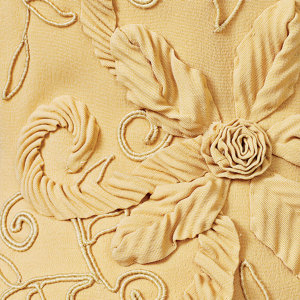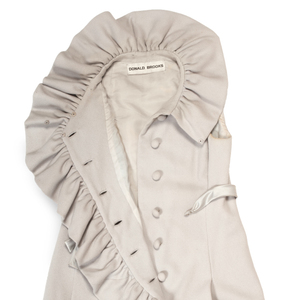How Did They Sew That? How to Create Dazzling Criss-Crossed Gores

This 1930s dress, made of molten-looking silk charmeuse, might light up a room like a bonfire. With just a little movement by the wearer, the gown shimmers from the scooped cowl neckline down to the flowing hem. The eye is drawn especially to the waist and hips, in front and back, by overlapping bands cut on different grains to accentuate the dancing-flames effect. The unique gore intersection plays with the light, catching and deflecting it with each sway. With help from a hidden weight inside the neckline curve, the cowl drapes to perfection. Read this article from Threads #165 to find out how to create the gown’s shimmering criss-cross effect.
 |  |
The technique used to create this dress takes advantage of a changing grain in shimmering silk charmeuse. It starts with a brilliantly cut garment in a color that sets the fire theme. You can almost feel the heat from a blazing fire with the illusion cast by color changes from panels of alternating grains. If the dress were blue, it might look like water, and if it were pale aqua, the dress could look like ice. The impression changes depending on the color you choose.
Fabrics with a nap require placing all the pattern pieces in the same direction for the cutting layout. This ensures a consistent color and texture throughout the finished garment. But if you break the rules and shift the layout, as shown on the facing page, you’ll create a unique and beautiful light-catching, effect. Here’s how.
Plan the pattern
Draft, drape, or modify an existing bias dress pattern to fit the silhouette. The front and back are identical except for the front cowl neckline. The six-gore dress buttons on one side. The gores terminate by crossing over the center front and back and meet…
Start your 14-day FREE trial to access this story.
Start your FREE trial today and get instant access to this article plus access to all Threads Insider content.
Start Your Free TrialAlready an Insider? Log in


































Log in or become a member to post a comment.
Sign up Log in